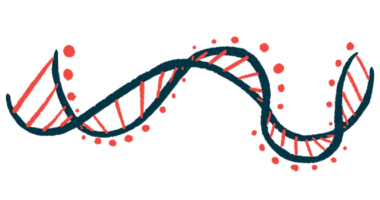In axSpA, women tend to be older, have more active disease than men
Researcher in Turkey examines sex differences in non-radiographic disease

Women with non-radiographic axial spondyloarthritis (axSpA) tend to be older and have longer, more active disease than men, a small study in Turkey has found.
They also tend to have more inflammation of the enthesis, which is where a tendon or ligament inserts into the bone, and peripheral arthritis, or an inflammation in the joints outside the spine.
“Further studies should determine what kind of changes these differences will make in the clinical status, follow-up and treatment of patients,” the study’s researcher wrote.
The study, “A comparison of the clinical characteristics and quality of life of male and female patients with non-radiographic axial spondyloarthritis,” was published in International Immunopharmacology.
AxSpA occurs when inflammation in spine causes back pain, stiffness
AxSpA occurs when the spine and other areas of the body become inflamed, causing back pain and stiffness, swelling, and fatigue. When changes to the spine cannot be seen on an X-ray, it is called non-radiographic AxSpA.
While people with non-radiographic axSpA can show signs of disease on an MRI scan, “there may still be a delay of mean 5–6 years in diagnosis.” Within up to 10 years, many progress to being diagnosed with ankylosing spondylitis, which means that changes become visible on an X-ray.
It is thought that men may progress more rapidly, whereas women may experience greater disease burden “because of a longer delay in diagnosis, a higher level of disease activity, and a lower response to treatment,” wrote the researcher, Ayse Unal Enginar, MD, who looked at how the clinical features of non-radiographic AxSpA differ between men and women.
The study included 50 men and 50 women, ages 18–65 years, who had a diagnosis of non-radiographic axSpA.
Women were significantly older than men (mean age of 39.04 vs. 34.28 years). They also had experienced a longer duration of first symptoms (10.55 vs. 7.56 years) and time to diagnosis (6.44 vs. 3.85 years) than men.
The proportion of women who smoked was about half that of men (24% vs. 50%).
Morning stiffness was about as common in women as in men, but significantly more women experienced peripheral arthritis, which usually occurs in the large joints of the arms and legs (48% vs. 16%).
Women score higher on disease activity and inflammation
Disease activity was evaluated with the Bath Ankylosing Spondylitis Disease Activity Index (BASDAI), where the score ranges from 0 to 10, with a higher value indicating more active disease. On average, women scored 0.86 points higher than men (3.74 vs. 2.88).
Enthesitis, or inflammation of the enthesis, was evaluated with the Maastricht Ankylosing Spondylitis Enthesitis Score (MASES). Women scored on average 2.14 points higher (worse) — 2.66 vs. 0.52.
In contrast, there were no significant differences between women and men in their ability to move, functional status, quality of life, or use of anti-TNF medications to ease symptoms.
“The results showed older age, longer disease duration and time to diagnosis, higher rates of peripheral arthritis, and higher MASES and BASDAI scores in the female patients,” the researcher concluded.








